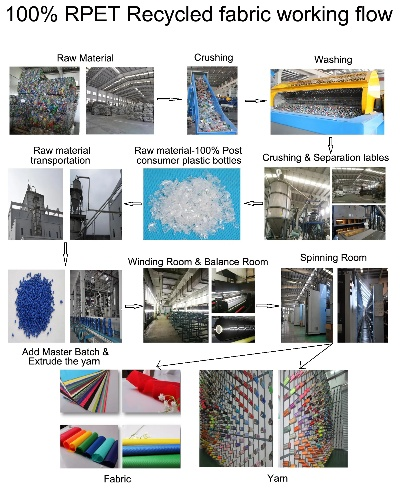The Recycling Landscape of Waste Textiles:A Comprehensive Overview
This article provides a comprehensive overview of the recycling landscape for waste textiles. It discusses the challenges and opportunities associated with this sector, highlighting the importance of sustainable practices in reducing environmental impact and promoting economic growth. The article explores various methods of recycling waste textiles, including mechanical recycling, chemical recycling, and biodegradable materials. It also examines the potential applications of recycled textiles in various industries, such as apparel, furnishings, and construction. Finally, the article highlights the need for policy support and investment in the development of sustainable textile recycling technologies and infrastructure. Overall, the article emphasizes the critical role that waste textile recycling plays in creating a circular economy and preserving natural resources.
In the world today, textile waste has become a pressing issue that demands our attention. As we continue to produce more and more clothing, household items, and other textile products, the amount of textile waste generated is increasing at an alarming rate. This not only poses a threat to the environment but also represents a significant economic loss for many industries. In this article, we will explore the recycling landscape of waste textiles, including their classification, processing methods, and the challenges they face in the recycling process. We will also provide some practical examples to illustrate how these textiles can be effectively recycled.

Waste textiles can be classified into several categories based on their composition and characteristics. Here is a simple table to help you understand them:
| Type of Waste Textile | Composition | Processing Methods |
|---|---|---|
| Clothes (clothing) | Wool, cotton, polyester, etc. | Washing, sorting, dyeing, spinning, weaving, etc. |
| Household items (e.g., towels, blankets) | Cotton, wool, polyester, etc. | Washing, sorting, dyeing, spinning, weaving, etc. |
| Fabric scraps (e.g., carpets, curtains) | Wool, cotton, polyester, etc. | Cleaning, sorting, dyeing, spinning, weaving, etc. |
| Other textiles (e.g., plastic bags, nylon ropes) | Plastic, nylon, etc. | Degradation, recycling, reusing |
The processing methods for waste textiles vary depending on the type of textile and its composition. For example, clothes can be washed and sorted before being dyed or spun into yarn for weaving. Household items may undergo cleaning and sorting before being dyed or spun into yarn for weaving. Fabric scraps may require cleaning and sorting before being dyed or spun into yarn for weaving. Other textiles may be degraded by using special equipment to break down their components.
Despite the efforts made by governments, industries, and individuals to recycle waste textiles, there are still numerous challenges in the recycling process. One major challenge is the lack of effective separation between different types of textiles during processing. This means that resources such as dyes and chemicals are often used multiple times, leading to high energy consumption and environmental pollution. Additionally, the recycling process for certain textiles, such as plastic bags and nylon ropes, requires specialized equipment and techniques that are not yet widely adopted.
To address these challenges, several innovative solutions have been proposed. For example, developing new technologies for separating different types of textiles during processing could greatly improve the efficiency and effectiveness of the recycling process. Another solution is to promote the use of renewable resources in the production of textiles, reducing the need for traditional petroleum-based materials. Finally, strengthening regulations and standards for textile recycling could encourage more industries to adopt sustainable practices and reduce the environmental impact of textile waste.
One practical example of waste textile recycling is the "Recycled Textile Project" initiated by the United Nations Environment Programme (UNEP). This project aims to transform textile waste into valuable products through various innovative processes such as turning old clothes into new fabrics, creating eco-friendly home furnishings, and producing sustainable clothing. By utilizing recycled textiles, the project not only reduces the amount of waste sent to landfills but also creates jobs and promotes sustainable development in local communities.
Another example is the "Green Textiles" initiative launched by the European Union. This initiative encourages the use of sustainable raw materials in the production of textiles, promoting circular economy principles and reducing the environmental impact of textile waste. By implementing stricter regulations and standards for textile recycling, the EU aims to create a more sustainable and eco-friendly textile industry.
In conclusion, waste textile recycling is an essential part of our effort to protect the environment and promote sustainable development. While there are still challenges to overcome, innovative solutions and practical examples show us that it is possible to turn waste textiles into valuable products and create a better future for ourselves and future generations. Let us work together to promote the recycling of waste textiles and make our planet a cleaner, healthier place for all.

废旧纺织品概述
废旧纺织品是指经过长时间使用或废弃后,不再被直接使用的纺织品,它们通常包括布料、毛线、线绳、旧衣物等,具有回收再利用的价值,随着人们对环保意识的提高,废旧纺织品的回收和再利用已经成为一种趋势。
废旧纺织品处理现状
废旧纺织品处理面临诸多挑战,包括资源浪费、环境污染等问题,许多地区已经开始采取措施回收废旧纺织品,以减少对环境的污染,一些企业也开始采用先进的再生技术,将废旧纺织品转化为新的产品,如地毯、服装面料等。
废旧纺织品处理案例分析
某城市废旧纺织品回收项目
该城市近年来大力推广废旧纺织品回收项目,通过设立专门的回收点、开展宣传活动等方式,鼓励市民和企业积极参与废旧纺织品回收,该项目取得了显著成效,不仅减少了资源浪费,还降低了环境污染,回收的废旧纺织品经过加工处理后,可以转化为新的服装面料、地毯等产品,实现了资源的有效利用。
废旧纺织品再利用项目

某公司采用先进的再生技术,将废旧纺织品转化为新型环保材料,该公司的产品不仅具有环保性,还具有时尚感,受到了消费者的青睐,该公司还通过开展线上线下销售活动,将废旧纺织品转化为新的经济价值。
废旧纺织品处理的重要性
废旧纺织品处理的重要性不言而喻,它可以减少资源浪费,降低环境污染,通过回收和再利用废旧纺织品,可以减少对自然资源的开采和消耗,降低环境污染,废旧纺织品处理可以促进循环经济的发展,推动绿色产业的发展,通过采用先进的再生技术,可以将废旧纺织品转化为新的产品和服务,促进循环经济的发展,废旧纺织品处理也是实现可持续发展的必然趋势,随着人们对环保意识的提高,废旧纺织品的回收和再利用已经成为一种趋势,只有通过有效的处理和利用,才能实现资源的可持续利用和环境的可持续发展。
废旧纺织品处理的方法和途径
废旧纺织品处理的方法和途径多种多样,政府和企业应该加强宣传和教育,提高公众对废旧纺织品回收和再利用的认识和意识,政府和企业应该制定相应的政策和法规,规范废旧纺织品的回收和处理行为,还可以采用先进的再生技术,将废旧纺织品转化为新的产品和服务,可以建立废旧纺织品回收和处理基地,设立专门的回收点和企业进行加工处理;还可以开展线上线下的销售活动,将废旧纺织品转化为新的经济价值。
废旧纺织品处理是一项重要的环保工作,通过回收和再利用废旧纺织品,可以减少资源浪费、降低环境污染;同时也可以促进循环经济的发展和实现可持续发展的必然趋势,我们应该加强宣传和教育,提高公众对废旧纺织品回收和处理的认识和意识;同时政府和企业也应该采取有效的措施和方法,推动废旧纺织品处理的进程。
Articles related to the knowledge points of this article:
The Fabric of Future:Classification and Application of A,B,C Textiles
The Carbon Content of Textiles
Immersing Yourself in Realistic and High-Definition Mobile Textile Images
The Story of 百里纺织品 从传统工艺到现代品牌的发展



